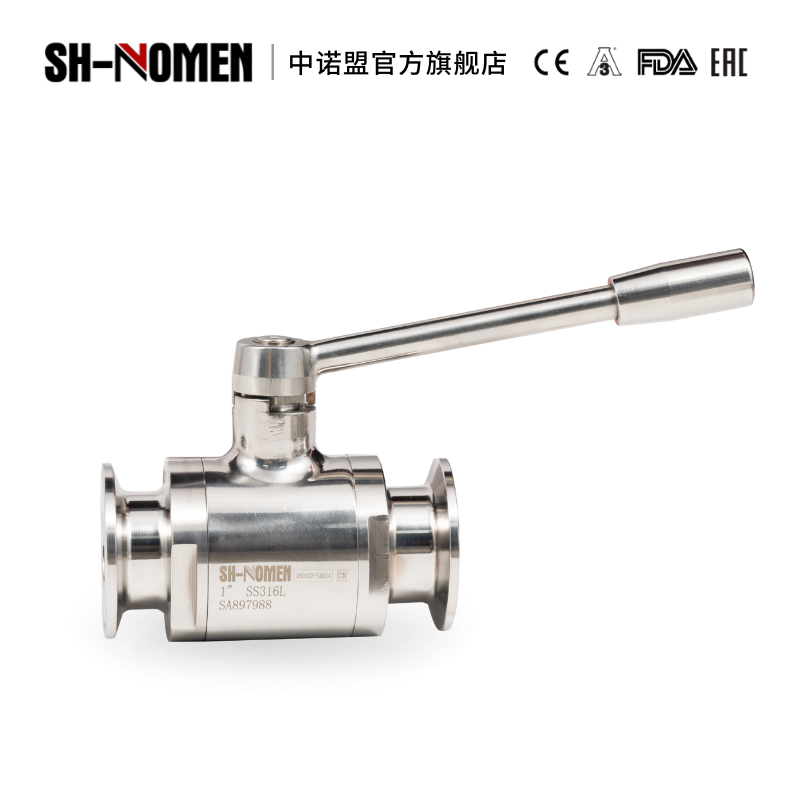

Classification by Structural Form
I. Floating Ball Valve
- The ball in a ball valve is floating. Under the action of the medium pressure, the ball can produce a certain displacement and press tightly against the sealing surface at the outlet end to ensure the seal at the outlet.
- Floating ball valves have a simple structure and good sealing performance. However, the load of the working medium borne by the ball is entirely transmitted to the outlet sealing ring. Therefore, it is necessary to consider whether the sealing ring material can withstand the working load of the ball medium. This structure is widely used in medium and low-pressure ball valves.
II. Fixed Ball Valve
- The ball in a ball valve is fixed and does not move when subjected to pressure. Fixed ball valves all have floating seats. After being subjected to medium pressure, the seat moves, causing the sealing ring to press tightly against the ball to ensure sealing. Bearings are usually installed on the upper and lower shafts of the ball, resulting in a small operating torque, making it suitable for high-pressure and large-diameter valves.
- In recent years, to reduce the operating torque of ball valves and increase the availability of seals, oil-sealed ball valves have emerged. Special lubricating oil is injected between the sealing surfaces to form an oil film, which not only enhances sealing but also reduces operating torque, making it more suitable for high-pressure, large-diameter ball valves.
III. Elastic Ball Valve
- The ball in a ball valve is elastic. Both the ball and the valve seat sealing ring are made of metal materials, and the sealing specific pressure is very high. According to the pressure of the medium itself, it is not possible to meet the sealing requirements, and an external force must be applied. This type of valve is suitable for high-temperature, high-pressure media.
- The elastic ball is obtained by opening an elastic groove in the lower inner wall of the ball. When closing the channel, the ball is expanded and pressed tightly against the valve seat by the wedge head of the valve stem to achieve sealing. Before rotating the ball, the wedge head is first loosened, and the ball returns to its original shape, creating a small gap between the ball and the valve seat, which can reduce the friction of the sealing surface and the operating torque.
Common Classification Methods for Ball Valves:
1. By pressure level: High-pressure ball valve, medium-pressure ball valve, low-pressure ball valve
2. By flow path type: Full-bore ball valve, reduced-bore ball valve
3. By port position: Straight-through, three-way, right-angle
4. By temperature range: High-temperature ball valve, ambient-temperature ball valve, low-temperature ball valve, cryogenic ball valve
5. By sealing type: Soft-seated ball valve, hard-seated ball valve
6. By stem assembly: Top-entry ball valve, side-entry ball valve
7. By connection type: Flanged ball valve, welded ball valve, threaded ball valve, clamp ball valve
8. By actuation method: Manual ball valve, automated ball valve (pneumatic, electric, hydraulic)
9. By size: Extra-large bore ball valve, large bore ball valve, medium bore ball valve, small bore ball valve
Working Principle of Ball Valves:
1. When the ball valve rotates 90 degrees, the ball surface should be fully presented at the inlet and outlet, thus closing the valve and cutting off the flow of the medium.
2. When the ball valve rotates back 90 degrees, the ball opening should be fully presented at the inlet and outlet, thus opening the flow with virtually no flow resistance.
Structural Principles of Ball Valves:
1. Ball valves are not restricted by the direction of installation; the flow direction of the medium can be arbitrary. The fluid resistance is low, and full-bore ball valves have almost no flow resistance.
2. The structure of ball valves is simple, with a relatively small size and light weight, making maintenance convenient.
3. The seal is tight and reliable. It has two sealing surfaces, and currently, the sealing surfaces of ball valves widely use various plastics, which provide good sealing and can achieve complete sealing. They are also widely used in vacuum systems.
4. Ball valves are suitable for frequent operation, with quick and easy opening and closing. They are easy to operate, with rapid opening and closing; from fully open to fully closed, it only takes a 90-degree rotation, facilitating remote control.
5. Maintenance is convenient. The structure of ball valves is simple, and the sealing rings are usually movable, making disassembly and replacement relatively easy.
6. The sealing performance of ball valves is good. When fully open or fully closed, the sealing surfaces of the ball and the valve seat are isolated from the medium, preventing erosion of the valve sealing surfaces by the medium.
7. The application range is wide, with bore sizes ranging from a few millimeters to several meters, and they can be used from high vacuum to high pressure.
8. Since there is a wiping action during the opening and closing process of ball valves, they can be used in media containing suspended solid particles.
9. Ball valves have low fluid resistance, no vibration, and low noise.
Functions of Ball Valves:
The closure member of a ball valve is a spherical body with a hole. By rotating the ball core around the valve stem axis by 0-90 degrees, the valve can be opened or closed.
Ball valves have many functions and are generally used in pipelines as switches to cut off or regulate the medium. The three-way ball valve can flexibly cut off, distribute, and change the direction of the medium flow. The sealing surfaces of ball valves are usually in a closed state with the ball surface, making them less susceptible to erosion by the medium. They are easy to operate, have a simple and compact structure, and can be used in conditions with water, natural gas, acids, solvents, etc.